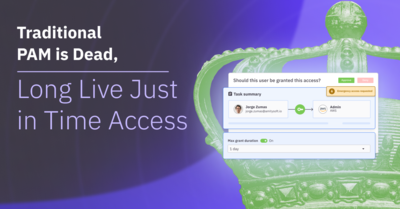
NYDFS 23 NYCRR 500 and Least Privilege Access
·Alex BoveeEarlier this year, amendments were made to the NYDFS 23 and NYCRR 500. Both changes reflecting a response to the significant growth in cybersecurity threats. Learn more about the these amendments, how they're related to the principle of least privilege, and how organizations can ensure compliance with them.
Moving on from Legacy IGA—Why Users Won’t Go Back
·Brittany SmailLegacy IGA solutions have been the norm in the identity space for a long time. However, these solutions are not without issues. Check out this blog post to learn more about the common challenges legacy IGA poses through real world examples.
Five Takeaways from the Snowflake Attack
·Alex BoveeBreaches are far from uncommon in the cybersecurity landscape, however, each incident can serve as a learning experience. The recent Snowflake attack serves as a similar scenario. Dive into ConductorOne CEO Alex Bovee's thoughts on how this breach came to happen, what we can learn from it, and the best steps companies can take moving forward to prevent reoccurrences.

Traditional PAM is Dead, Long Live Just in Time Access
·Alex BoveeFor the modern, cloud-forward company, strategies for securing infrastructure and identity are changing at a breakneck pace. MFA and trditional PAM are not sufficient for securing access in the cloud. Dive into the future of PAM through least privilege and JIT access in this blog.
HARBleed: When History Doesn't Repeat, But It Does Rhyme
·Paul QuernaThe cybersecurity landscape is marked by breaches that serve as learning pivots. The Okta's recent incident shares a thematic lineage with one of the most notorious security lapses in history: Heartbleed. Delve into the C1 coined concept termer "HARBleed," which highlights its procedural kinship with Heartbleed and emphasizing the lurking danger represented by bearer tokens.

